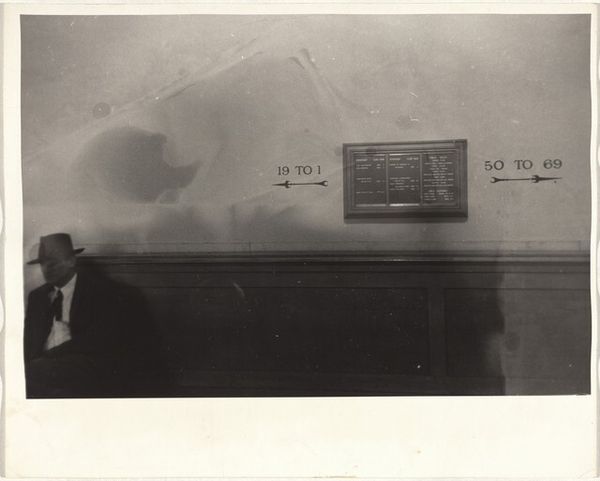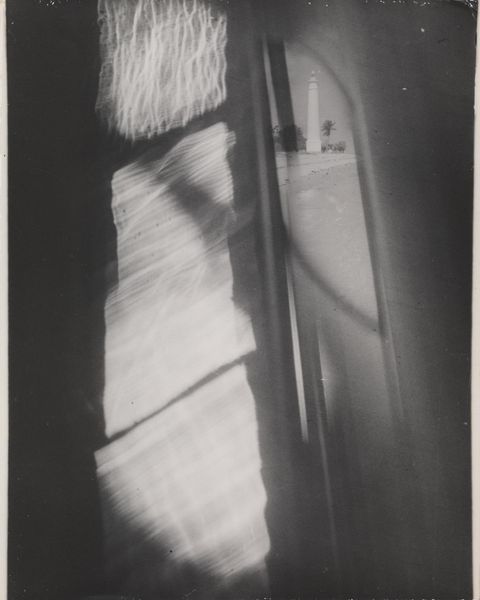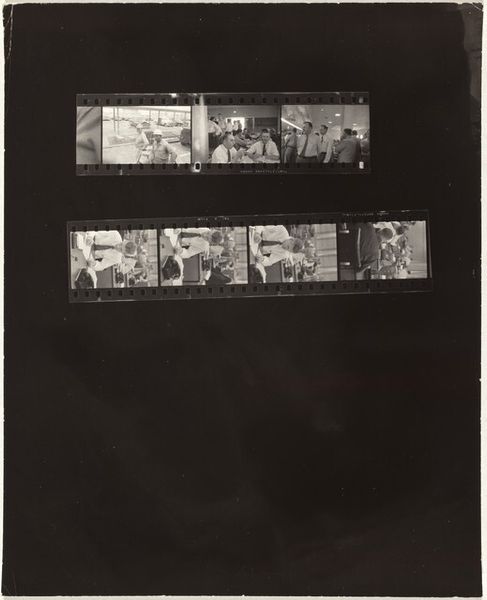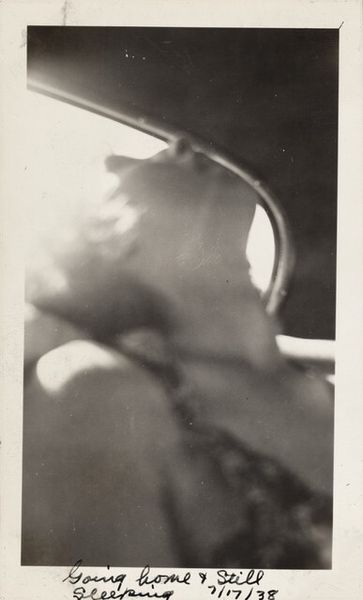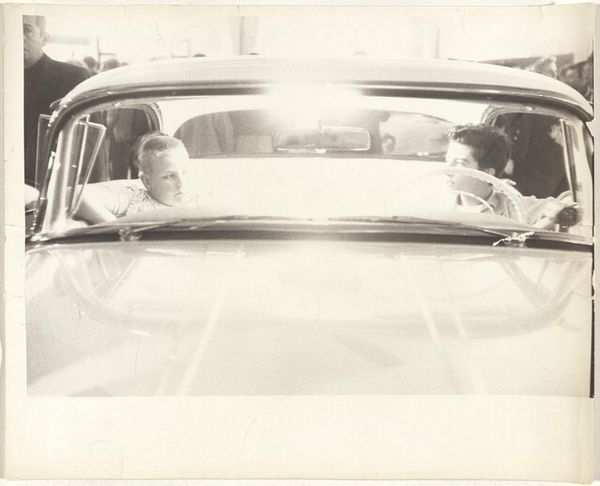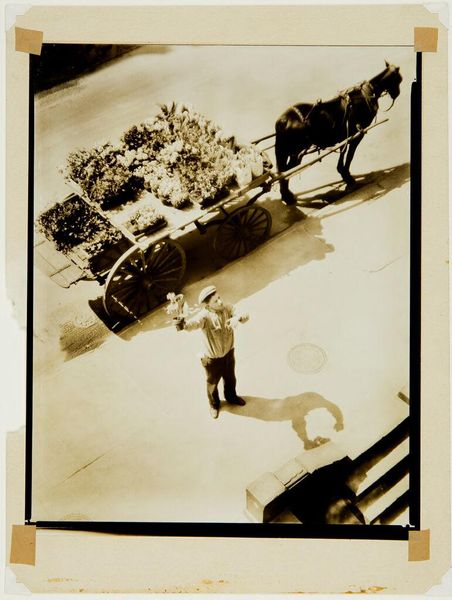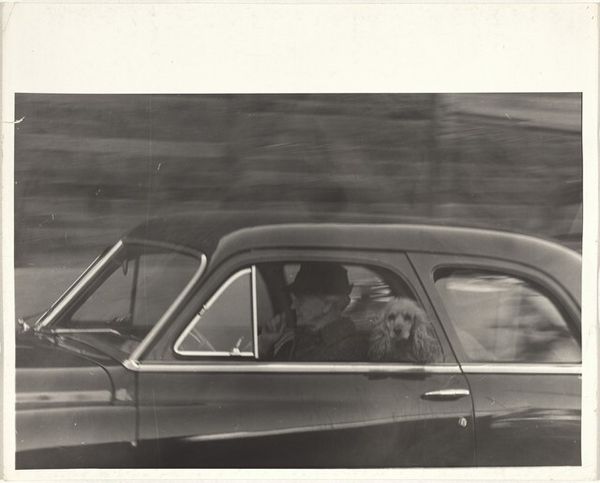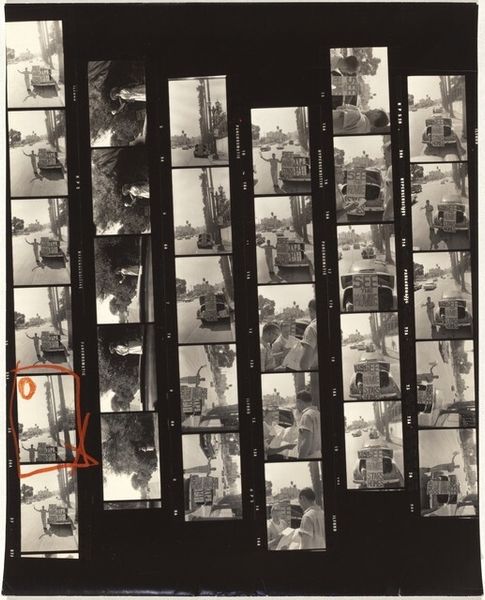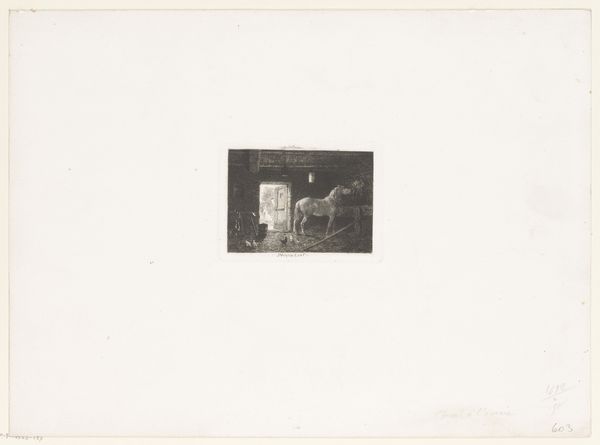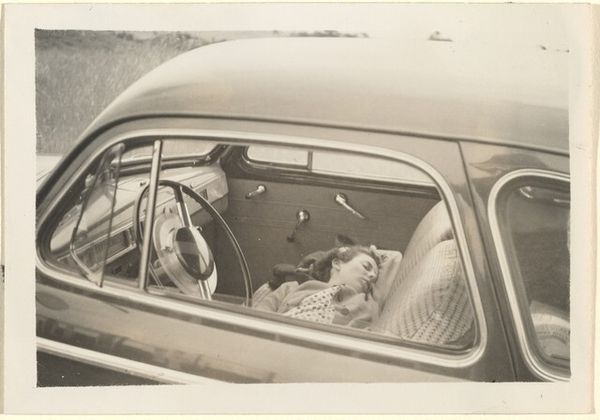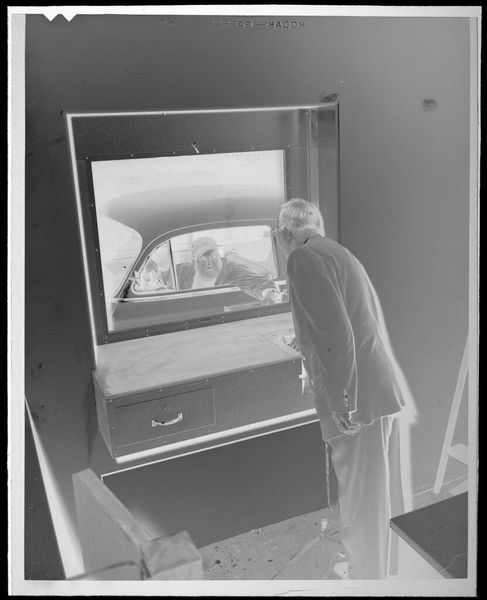
photography, gelatin-silver-print
#
portrait
#
wedding photograph
#
wedding photography
#
archive photography
#
photography
#
historical photography
#
gelatin-silver-print
#
modernism
Dimensions: image: 13.8 x 8 cm (5 7/16 x 3 1/8 in.) sheet: 14.7 x 8.9 cm (5 13/16 x 3 1/2 in.)
Copyright: National Gallery of Art: CC0 1.0
Curator: The work before us, a gelatin-silver print from around 1930, is titled "Rosa". It's quite striking. What are your first thoughts? Editor: There's a deep nostalgia. It feels haunted. The grainy texture of the gelatin silver print seems to underscore the ephemeral nature of memory. Curator: Indeed. What we observe is a photograph of a hand holding another, older photograph, this one a portrait, seemingly on the back of a vehicle. There's also the barely discernible image of a windmill or similar structure, in the reflection, suggesting the countryside or rural landscape. The effect, through visual layering, creates levels of mediation. Editor: The gesture is loaded; this offering of a memory, pinning a memory onto a car – something that travels, is both present and absent. Is this a statement about how photography anchors lived events? What social realities are being archived and memorialized? I think of roadside memorials... Curator: I read it more in terms of the hand’s gesture; there's an immediate dialectic formed by the geometry, especially the oppositional angles of the human form. Notice how the aging hands contrast with the apparent youth depicted in the photograph. It also juxtaposes the modernity of a vehicle with older modes of being in the background, suggesting a shifting landscape. Editor: Yes, absolutely. How does that shifting landscape reflect social transitions, migration, urbanization, loss of land? The wedding picture is central, but the context offers a richer understanding. Does the work itself question institutions that seek to standardize, capture, and distribute representations of "culture?" What is it that makes "Rosa" particularly significant here? Curator: Through photographic texture, it foregrounds questions about materiality. It presents photography's capability as more than the content it presents—it calls our attention to the constructed nature of photography itself. We move from the depicted to the experiential. Editor: It brings to bear the social constructs of seeing itself! Seeing both then and now. Curator: An evocative gesture, indeed. Editor: Absolutely; a photograph commenting on photographs, time, progress... memory.
Comments
No comments
Be the first to comment and join the conversation on the ultimate creative platform.
